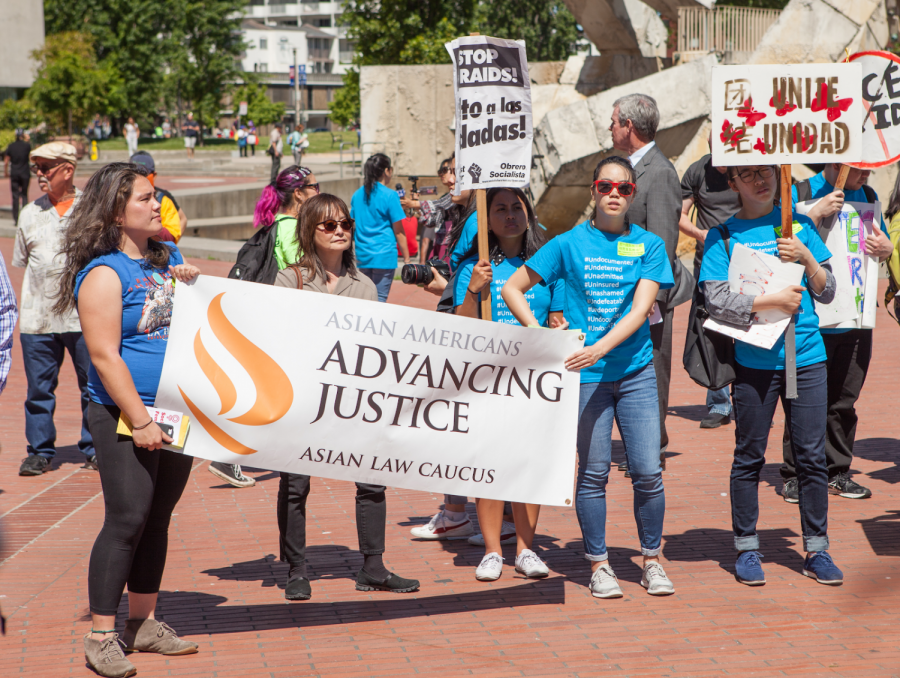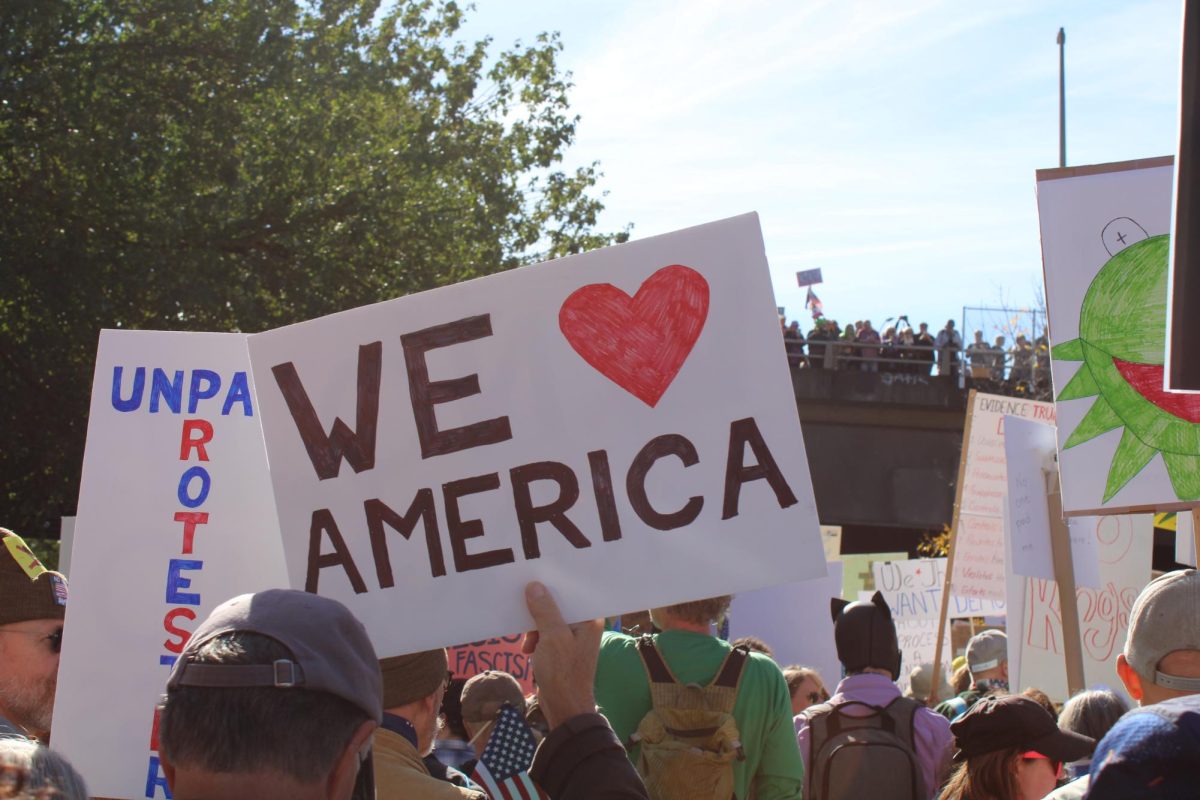Editorial: Asian-American violence is nothing new
Pax Ahimsa Gethen, courtesy of Wikimedia Commons
Caption: Asian-American activists fight for civil liberties at a 2017 May Day (International Workers’ Day) rally in San Francisco.
March 19, 2021
Content warning: This article contains graphic descriptions of violence and hate crimes against the Asian-American community.
On Mar. 1, 2020, an Asian man in New York City gets water thrown at him while being accused of carrying the coronavirus.
On Mar. 16, 2020, an Asian man is verbally confronted for coughing in a Target store in Daly City, Calif.
In early April of 2020, an Instagram post is shared by @antiasianclubnyc threatening to “shoot at every Asian” in Chinatown to “destroy the epidemic of the coronavirus.”
Now, nearly a year later, hashtags like #stopasianhate and #protectourelders are trending across social media, and mainstream media sources are finally covering the repeated attacks on Asian people in the United States. However, for Asian-American community members, this outdated news has only come after months of unheard cries for help.
In late January of 2021, several Portland businesses were attacked, 11 out of 13 being Asian-owned. These businesses are located in East Portland, where the majority of Portland’s Asian community resides. One could reasonably assume that, since these attacks were local, more Portlanders would be aware of it. However, due to the lack of accurate reporting and media coverage on discrimination and violence towards Asian-Americans (especially for lower-income neighborhoods like the Jade District in East Portland where these businesses are located), it’s difficult to talk to another person about the rise in anti-Asian hate crimes without having to give context.
Media coverage of Asian hate crimes fails to label them as such, sustaining the idea that our pain does not deserve recognition. On Mar. 16, 2021, a white terrorist shot and killed eight women in Asian-owned businesses, six of whom were Asian victims. In the days following this tragic hate crime, headlines failed to acknowledge the race of the victims, in turn ignoring the racist intent of the murderer and working to victimize him instead. The idea that Asian-American violence is not “newsworthy” is a familiar one, and continues to suppress and ignore our oppression.
The “model minority” myth– upheld by American white supremacy– affords Asian-Americans a false luxury that allows people to perceive us as “closer to whiteness.” As a result, Asian-American reports of racism are often ignored. Our oppression is overshadowed by our perceived perfection.
This sentiment, in combination with the popularity and virality of racist Asian jokes, perpetuates the notion that our pain shouldn’t, and doesn’t, deserve to be taken seriously. This erasure and ignorance of Asian hate crimes creates a cycle in which Asian-Americans fail to speak up or report violence out of the fear of not being taken seriously.
Historically, the ideal Asian person is seen as submissive and apolitical, deeming us ideal targets for racial hate crimes without fear of retaliation or backlash. In a white-dominated world, adhering to these compliant and nonassertive stereotypes affords us power and privilege. Many of us seek to fulfill these stereotypes to appease white people in power, internalizing the racism that we have been conditioned in. As a result, many Asian-Americans suffer from internalized racism that contributes to the silencing of incidents of racialized violence.
Similarly, the grip of white supremacy rewards division and conflict between marginalized racial groups in America, as it hinders collective power that has the potential to dismantle this system of superiority. Asian-Americans must refrain from using Asian hate as an opportunity to exercise anti-Blackness. Instead, we should seek allyship and solidarity to promote universal liberation.
The Students For Fair Admissions v. Harvard court case, for example, displays the terrifying social control white America has over people of color, baiting different communities into an us-versus-them narrative as marginalized groups vie for the limited opportunities that they are allowed. When the race of Asian students negatively impacted their college admissions, white litigators sought to tear down the affirmative action policies that benefit marginalized groups. With Asian-American plaintiffs, asking the courts to end the use of race in college admissions is more effective than white anti-affirmative action students.
As victims of white supremacy, each oppressed racial group has the potential to turn against one another, as displayed by inter-racial violence. However, phrases like “Asian Lives Matter” divert attention away from liberation movements by turning oppression into a competition, rather than a common enemy that needs to be treated as such.
To our non-Asian peers: use this opportunity to uplift and listen to Asian voices, and further educate yourself on how to critically analyze ways in which your behavior negatively impacts the Asian community.
For more information on how to help, visit the links below.




